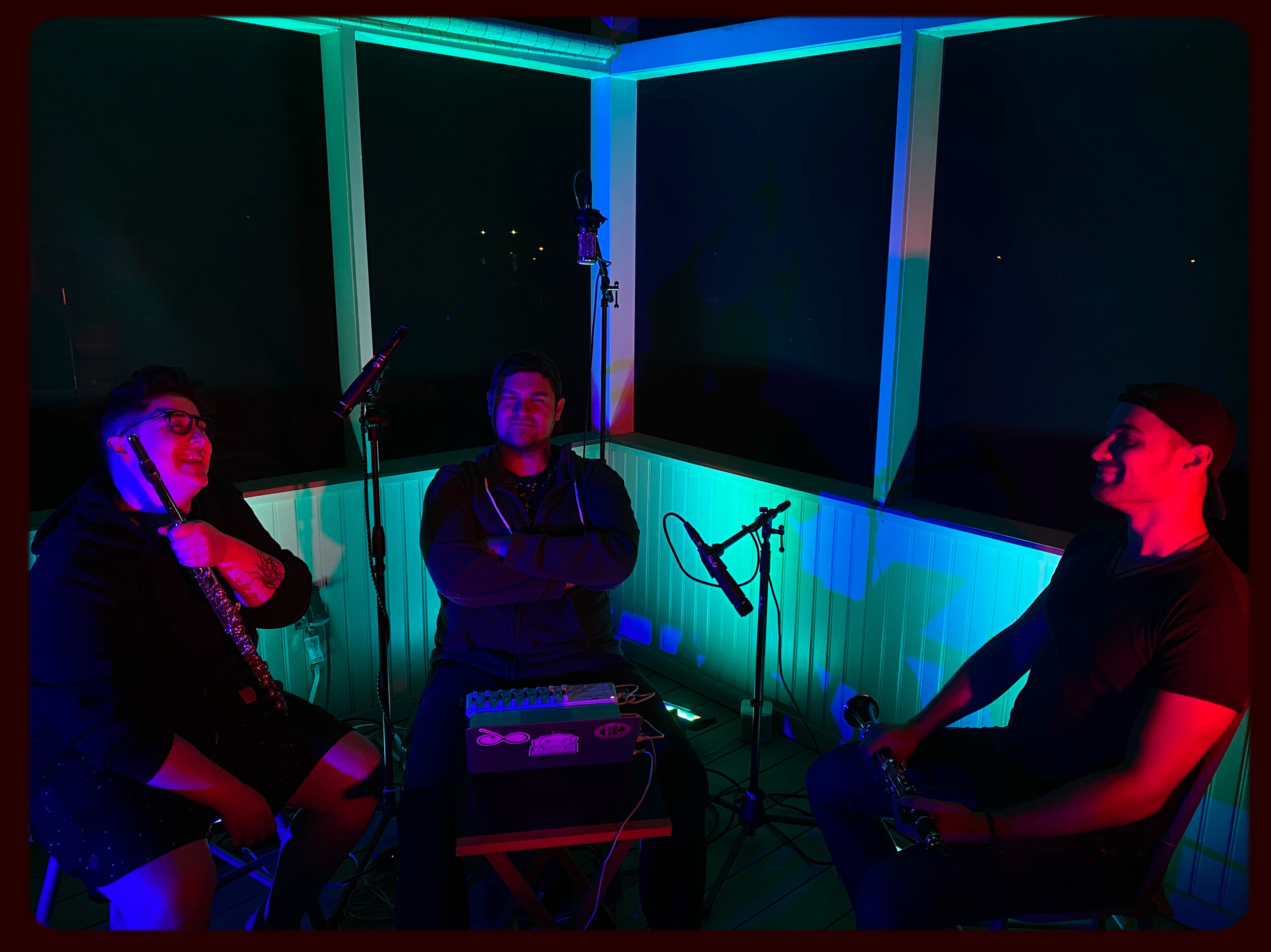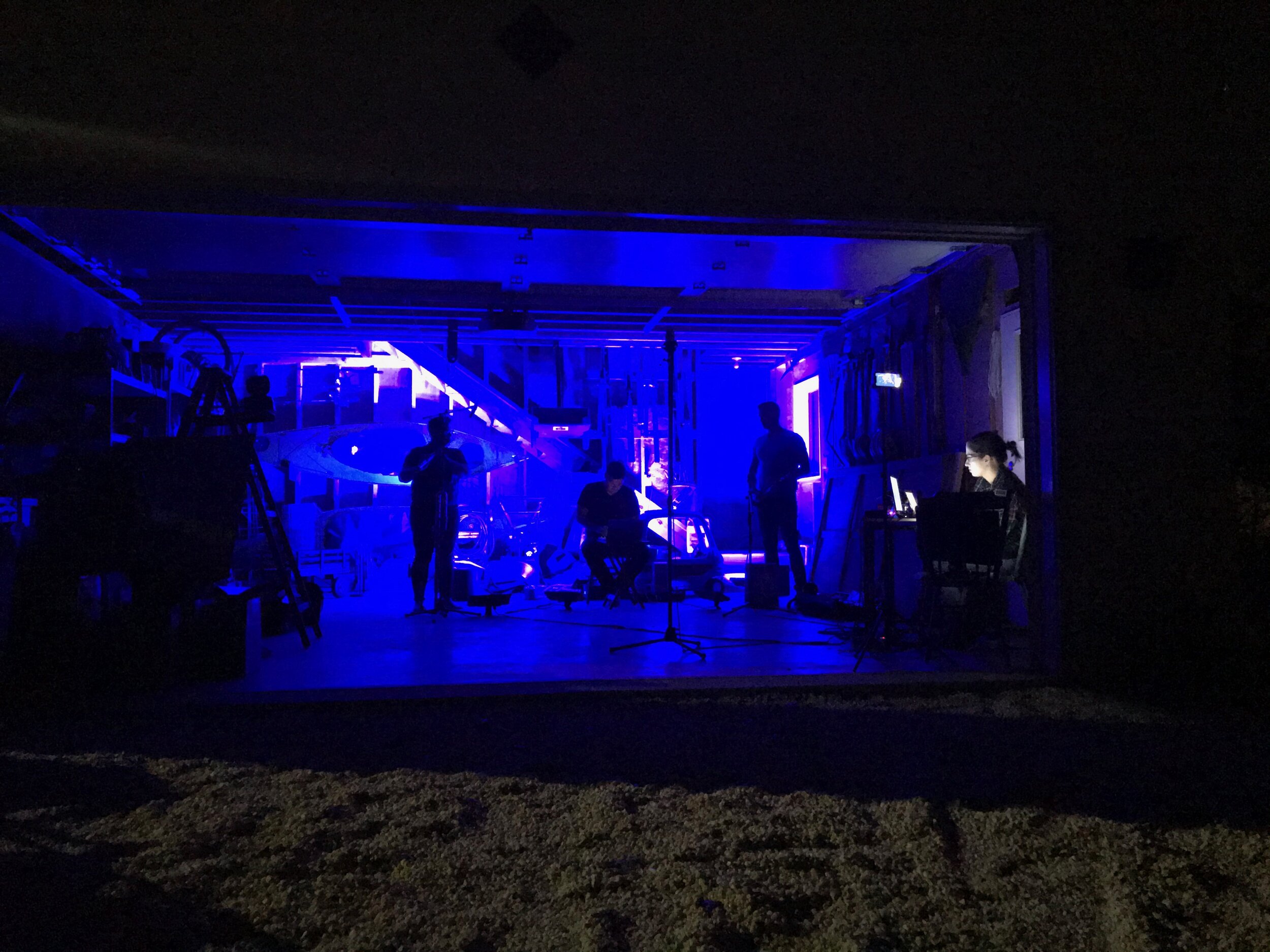Song Sessions
SONG SESSIONS
The term “song session” was coined by bioacoustician Roger Payne in 1970 and describes the elaborate vocalizations produced by humpback whales. Megaptera novaeangliae employ a progression of sounds called units, which may differ in frequency, contour, and duration. These units are assembled sequentially into phrases (or repeating patterns) that rhythmically vary. A progression of phrases comprises a theme. One “song” is formed when a series of distinct themes—mostly occurring with invariant order—eventually repeat. Thus, a ”song session” comprises several clear iterations of a song.
Using the structure outlined above, Song Sessions connects whale and human music. Employing flutes, clarinets, sine-tones, and an LED light installation, four improvisers perform an ever-changing work based on the structure of whale songs. With flutes played by Isabel Lepanto Gleicher and clarinets played by Eric Umble, the duo improvises as two whales communicating over a vast ocean. The sine-tones, played by Barry Sharp, provide an evolving ambiance that comprises frequencies of oceanic noise pollution. Lastly, Paige Seber utilizes an adaptable light installation improvising alongside the musicians to mimic the ocean in flux and respond in real-time to the performance's dramatic arc.



